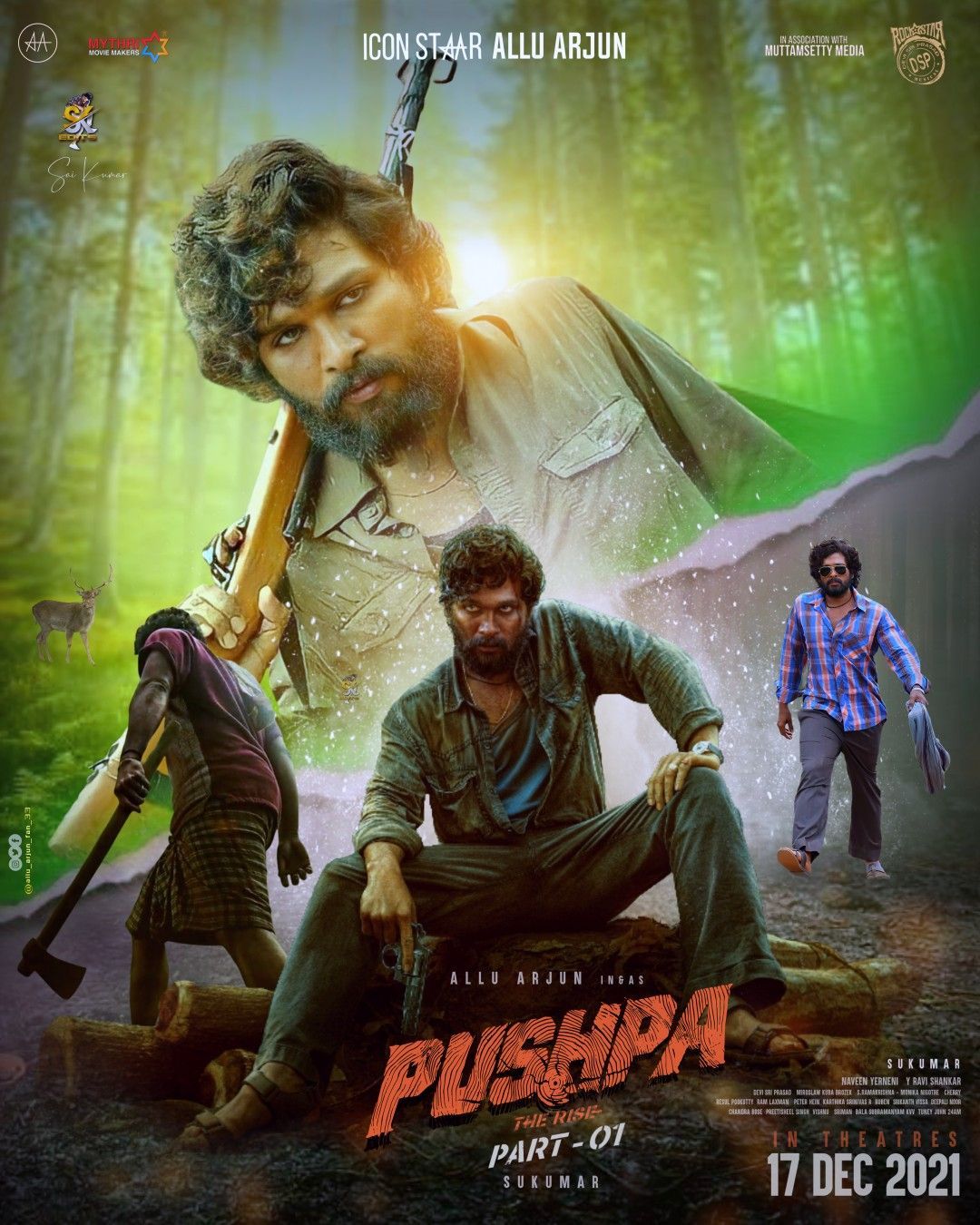Can a regional film truly dominate the pan-Indian box office? The answer lies in the unprecedented success of Pushpa: The Rise and its sequel, Pushpa 2: The Rule. These films have redefined the landscape of Indian cinema by breaking barriers and setting new benchmarks. With their captivating storytelling, stellar performances, and meticulous production values, these movies have captured the imagination of audiences nationwide.
The journey of Pushpa began with its first installment, Pushpa: The Rise, which was directed by the visionary filmmaker Sukumar. Released in 2021, it quickly became a cultural phenomenon, earning widespread acclaim for its unique narrative and Allu Arjun's magnetic portrayal of the titular character. The film chronicled the rise of Pushpa Raj, a humble safeda laborer who ascends to become one of the most powerful figures in the red sandalwood smuggling racket. This tale of ambition, resilience, and empowerment resonated deeply with viewers across demographics and regions, establishing Pushpa as more than just a movie—it became a movement.
| Name | Allu Arjun |
|---|---|
| Date of Birth | 8 June 1979 |
| Place of Birth | Vijayawada, Andhra Pradesh, India |
| Profession | Actor |
| Famous For | Pushpa series, S/O Satyam, Ala Vaikunthapurramloo |
| Awards | Best Actor at Filmfare Awards South (Pushpa) |
| Reference Website | IMDb Profile |
The sequel, Pushpa 2: The Rule, continued this extraordinary trajectory. Building on the foundation laid by its predecessor, it expanded the universe of Pushpa Raj while delving deeper into his complex psyche. Released amidst immense anticipation, the film shattered several records within its opening days. Notably, it achieved the distinction of being the highest-grossing first-day collection in Indian cinema history, surpassing even blockbusters like RRR and Jawan. Such feats underscored the universal appeal of the franchise and cemented its status as a cinematic juggernaut.
One of the key factors behind the Pushpa franchise's triumph is its ability to transcend linguistic boundaries. While rooted firmly in Telugu cinema, the films have successfully appealed to Hindi-speaking audiences through strategic dubbing and marketing efforts. This inclusivity has enabled them to draw massive crowds in theaters across North India, contributing significantly to their overall box-office performance. Furthermore, the inclusion of renowned actors such as Rashmika Mandanna and Fahadh Faasil added layers of intrigue and authenticity to the narrative, enhancing its mass appeal.
In addition to commercial success, Pushpa: The Rise received critical appreciation during award seasons. At the 67th Filmfare Awards South, it emerged victorious in seven categories, including Best Film, Best Director for Sukumar, and Best Actor for Allu Arjun. These accolades highlighted not only the technical brilliance but also the emotional depth embedded within the storylines. Moreover, the film's representation on global platforms like Netflix further amplified its reach, introducing international audiences to the charm of South Indian cinema.
As we delve into specific milestones achieved by Pushpa 2, it becomes evident that the film set an impressive pace right from its launch. Advance bookings alone crossed Rs 80 crore, indicating strong pre-release demand. By the end of Day 3, it had already amassed collections exceeding Rs 300 crore globally, putting it well on track toward achieving the coveted Rs 1,000-crore mark faster than any other Indian release. Industry experts attribute this rapid growth partly to increased footfall in multiplexes following recent lulls due to lackluster releases earlier in the year.
Interestingly, despite being released mid-week, the film managed to fill houses consistently across major cities including Delhi, Mumbai, Bengaluru, Hyderabad, and Chennai. This phenomenon attests to the robust fanbase cultivated over years by both Allu Arjun personally and the Pushpa brand collectively. Additionally, positive word-of-mouth reviews played a crucial role in sustaining interest throughout its theatrical run, ensuring sustained attendance beyond initial weekends.
Beyond mere numbers, however, lies the cultural impact generated by these films. They challenge stereotypes associated with rural protagonists while celebrating grassroots entrepreneurship. Through vivid portrayals of struggle against systemic corruption and exploitation, they inspire hope among underprivileged sections of society. Simultaneously, they celebrate individuality and self-expression without compromising traditional values—a delicate balance rarely achieved so seamlessly in mainstream entertainment.
Looking ahead, there is speculation regarding potential future installments in the Pushpa saga. Given its overwhelming popularity and untapped narrative possibilities, fans eagerly await announcements confirming continuation of this epic journey. Meanwhile, the existing chapters serve as testament to what can be accomplished when creativity meets execution excellence—raising standards for aspiring filmmakers everywhere.
In conclusion, the Pushpa franchise exemplifies how regional stories told authentically yet innovatively can achieve national prominence. From humble beginnings centered around a simple laborer’s dream to becoming part of elite club of billion-dollar grossers worldwide, this series represents quintessential rags-to-riches arc—not just for its characters but also for entire industry itself. As long as creators continue prioritizing quality content above all else, there remains infinite scope for similar achievements going forward.

.jpg)


